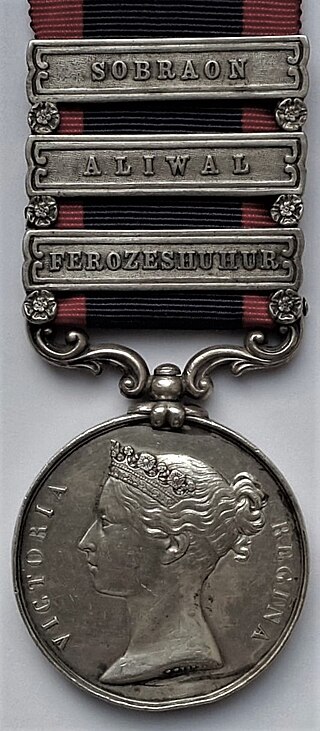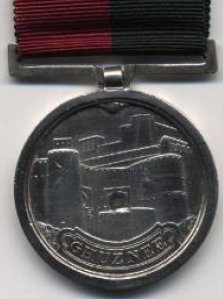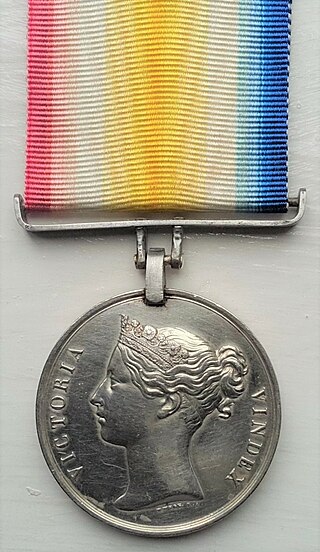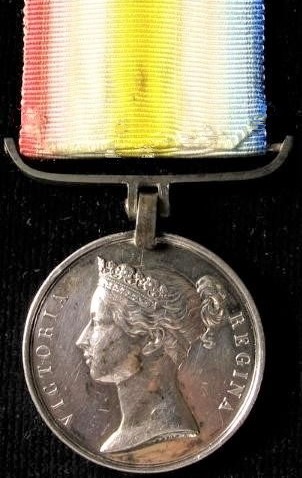
The Battle of Ahmed Khel took place during the Second Anglo-Afghan War. It was fought on 19 April 1880, on the road between Kandahar and Kabul in central Afghanistan between Afghan tribesmen and soldiers of the British Empire, including forces from both British and Indian armies.

The Battle of Kabul was part of a punitive campaign undertaken by the British against the Afghans following the disastrous retreat from Kabul. Two British and East India Company armies advanced on the Afghan capital from Kandahar and Jalalabad to avenge the complete annihilation of the British-Indian military-civilian column in January 1842. Having recovered prisoners captured during the retreat, the British demolished parts of Kabul before withdrawing to India. The action was the concluding engagement to the First Anglo-Afghan War.

The Battle of Peiwar Kotal was fought on 2 December 1878 between British forces under Major General Frederick Roberts and Afghan forces under Karim Khan, during the opening stages of the Second Anglo-Afghan War. The British were victorious, and seized the strategic Peiwar Kotal Pass leading into the interior of Afghanistan.

The Indian General Service Medal was a campaign medal approved on 3 August 1938, for issue to officers and men of the British and Indian armies, and of the Royal Air Force.

The Sutlej Medal was a campaign medal approved in 1846, for issue to officers and men of the British Army and Honourable East India Company who served in the Sutlej campaign of 1845–46. This medal was the first to use clasps to denote soldiers who fought in the major battles of the campaign.

The Battle of Ghazni took place in the city of Ghazni in central Afghanistan on Tuesday, July 23, 1839, during the First Anglo-Afghan War.

The India Medal was a campaign medal approved in 1896 for issue to officers and men of the British and Indian armies.

The Ghuznee Medal is a British campaign medal awarded for participation in the storming of the fortress of Ghuznee in Afghanistan, on 21 to 23 July 1839 by troops of the British and Indian Armies. This action, the Battle of Ghazni, took place during the First Anglo-Afghan War.

The Afghanistan Medal, sanctioned on 19 March 1881, was awarded to members of the British and Indian armies who served in Afghanistan between 1878 and 1880 during the Second Afghan War, the first war being from 1839 to 1842.

The China War Medal was issued by the British Government in 1843 to members of the British and Indian forces who took part in the First Opium War (1839–42). The medal was designed by William Wyon.

The Candahar, Ghuznee, Cabul Medal was awarded to those who took part in the campaign in the spring and summer of 1842, under the command of General William Nott, to restore British standing in Afghanistan after earlier defeats during the First Anglo-Afghan War.

The Scinde Medal was authorised on 22 September 1843 and issued to soldiers of the Honourable East India Company, the 22nd Regiment of Foot of the British Army and members of the Indian Navy who crewed the Indus Flotilla, who participated in Major General Sir Charles Napier's conquest of Scinde between 1842 and 1843.

The Indian Army has a distinguished history in which they won many battle and theatre honours. The practice of giving battle honours began with the East India Company who awarded these to the units of the native Indian corps in their presidency armies. The practice continued after the advent of the British Crown post-1857 when the armies of the East India Company became part of the British Indian Army and even after India's independence in 1947. The earliest conflict for which a battle honour was awarded was "Plassey" which was awarded in 1829 to the 1st Regiment, Bengal Native Infantry which served the East India Company in Bengal while the latest is "Kargil" in 1999 awarded to units of independent India's army for feats during the Kargil War.

The Africa General Service Medal, established in 1902, was a campaign medal of the United Kingdom. It was awarded for minor campaigns that took place in tropical Africa between 1900 and 1956, with a total of forty five clasps issued. The medal is never seen without a clasp and some are very rare. Most medals were granted to British led local forces, including the King's African Rifles and the West African Frontier Force. The only campaigns where European troops were present in any numbers were the various Somaliland campaigns,, and in Kenya.

–

The Ashanti Medal was sanctioned in October 1901 and was the first campaign medal authorised by Edward VII. This medal was created for those troops engaged in the Third Ashanti Expedition, also known as the War of the Golden Stool. This expedition lasted from March – December 1900, with the final outcome that the Ashanti maintained its de facto independence. Ashanti was made a Protectorate of the British Empire, but they ruled themselves with little reference to the colonial power.

The Kabul to Kandahar Star, also known as the Roberts Star or Kandahar Bronze Star was awarded to those British and Indian troops who participated in the 320 mile march from Kabul to Kandahar in Afghanistan between 9–31 August 1880, under the command of Lieutenant-General Sir Frederick Roberts who rode horseback on his horse Vonolel In addition, it was awarded to the troops stationed en route at Kelat-i-Ghilzie, who accompanied General Roberts on the final ninety miles to Kandahar.

The Jellalabad Medal was a campaign medal issued by the British East India Company. It was established by Lord Ellenborough, the Governor-General of India, on 30 April 1842.
The medal was awarded for the defence of Jalalabad from 12 November 1841 to 7 April 1842, during the First Afghan War, to the troops under the command of Sir Robert Sale. About 2,600 soldiers took part, including the 13th Foot, the 35th Bengal Native Infantry, as well as detachments from other Indian Army units and some loyal Afghan forces.

The Battle of Charasiab was fought on 6 October 1879 during the Second Anglo-Afghan War between British and Indian troops against Afghan regular forces and tribesmen.
With the inception of Company rule in India by the East India Company in 1757, the tradition of giving medals also began. Campaign medals and awards were given to soldiers who fought in the Company's presidency armies. After 1895, with the formation of British Indian Army, soldiers were awarded with gallantry awards alongside Imperial Service Troops of the princely states. Awards were also bestowed upon the personnel of Royal Indian Navy and of Royal Indian Air Force with its incorporation in 1932. Indian Imperial Police were also eligible for the police honours.
The company's powers were removed in 1858 after the Indian Mutiny, and the British Crown assumed direct control of India and monarch took the title of Emperor of India in 1876. During the British Raj, new medals and orders were established and were awarded for the services to the Crown and the Indian Empire by Europeans and Indians of British India and the princely states. After 1914, Indians also became eligible for British Honours. The following is a list of orders, decorations and medals related to British in India:



















